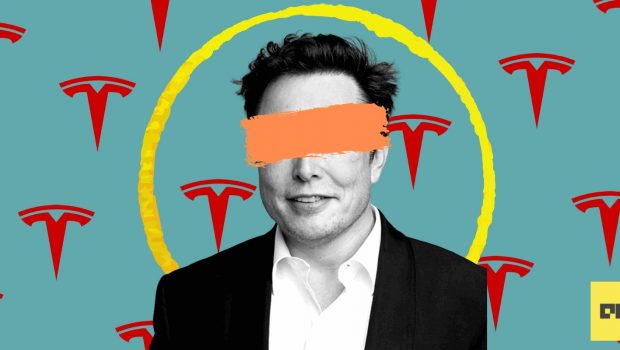How Tesla’s self-driving technology compares to other EVs
Tesla has released its Full Self-Driving Beta 10.11 update with notes showing marked improvement in critical areas like reducing unnecessary slowdowns. The version has been pushed out only to Tesla employees for now and will be rolled out to other users only if no bugs are detected. CEO Elon Musk replied to a tweet from FSD Pilot saying that if the version worked, the minimum driver safety score to access the FSD Beta could be lowered to 95.
Director of AI at Tesla, Andrej Karpathy, tweeted that his favourite feature was that the latest version makes more accurate predictions about where vehicles are turning or merging, which will help cut down unnecessary slowdowns for other vehicles that are not on the same path. The Beta v10.11 has also upgraded its lane geometry modelling from dense rasters to an autoregressive decoder using a transformer neural network that is close to a GPT. This enables the vehicles to predict crossing lanes, post-processing containing fewer errors and cheaper computation.
The notes also described the new version as having better navigational abilities. The vehicle will be able to detect if the map is inaccurate, owing to an improved right-of-way understanding. Apart from this, the Beta v10.11 also does a better job at VRU (Vulnerable Road Users) detection, namely, pedestrians and cyclists. The update shows a dramatic 44.9 per cent improvement from the previous update in decreasing the cases of Tesla’s VRU-related false alarms. Known as ‘phantom braking,’ this reduces the system’s ‘spurious false positive pedestrians and bicycles’, consequently targeting unnecessary slowdowns once again.
The AI behind Tesla’s FSD
Last year in January, Tesla revealed that it was migrating towards neural nets for decision-making for its FSD. Until then, Tesla’s FSD was using ‘right-of-way’ understanding with C++ programming to make decisions.

The automaker’s firmware hacker and researcher @greentheonly said that Tesla was migrating in phases to improve the decision-making in its FSD Beta with each firmware update. Since NNs, Tesla vehicles will receive instant feedback from the company’s Mothership. The mix of AI, ML and neural networks has built Tesla’s computer vision substantially.
Tesla’s FSD system begins with a three-dimensional Vector Space that assists the car with recognising its environment using its eight cameras. All eight videos are then transformed into a single virtual environmental prediction model that facilitates the computer with a bird’s eye view of its surrounding space. The system has a short-term memory that can retain the position of other vehicles sitting at an intersection even if they are blocked from the vehicle’s vision by traffic.
The Vector Space data that Tesla is using is a bunch of algorithms that handles the vehicle’s routing and movement and is known as the neural net planner. The planner runs thousands of simulations in each minute to choose from and determine the best course of action. It also simulates other vehicles and pedestrians to predict their behaviour.

Clearly, Tesla is handling simulation data on a large scale because of which it announced Project Dojo last year on Tesla AI Day. The supercomputer is equipped for neural net video training.
The electric race
Since it is a market leader, Tesla’s FSD Beta has always been pitted against other big wig competitors. Even prior to its latest 10.11 update, Whole Mars Catalog, Tesla follower and FSD Beta tester, posted a video of Tesla’s FSD against Waymo’s driverless taxi. While Tesla’s vehicles weren’t entirely driverless and required partial monitoring by a driver, Waymo’s taxi was self-driven. However, Tesla’s cars aren’t limited to small environments like Alphabet’s Waymo. Tesla’s driver also gives feedback from the Beta driving system and reports them. This propels Tesla’s Beta version forward.
The Mercedes-Benz Drive Pilot also showed similar results when tested against Tesla’s FSD Beta system. While the Mercedes could only drive itself on the freeway, Tesla’s vehicle can work anywhere.
Lucid Motors, which was founded in 2007 by CEO Peter Rawlinson, was formerly with Tesla as an engineer of the Model S. But Tesla’s longstanding partnerships with its battery manufacturers like Panasonic, Samsung, LG and CATL have proven to be an advantage for its growing manufacturing capacity. Lucid has announced it expects to manufacture more than 500,000 units by 2030. Tesla is already producing 509,737 electric vehicles, with deliveries reaching close to half a million units. Tesla has also beaten Lucid Motors at pricing. While Lucid sells the high-end model of the Air, the Dream edition for USD 169,000, Tesla sells the base model for its Model S sedan at USD 79,990 and the highest-end Plaid + version at USD 139,990, minus Tesla’s USD 10,000 premium software upgrade. Even with the hiccups in Tesla’s full self-driving tech, it is making constant improvements that are even now far ahead in terms of its competition in the EV race.








Gloss